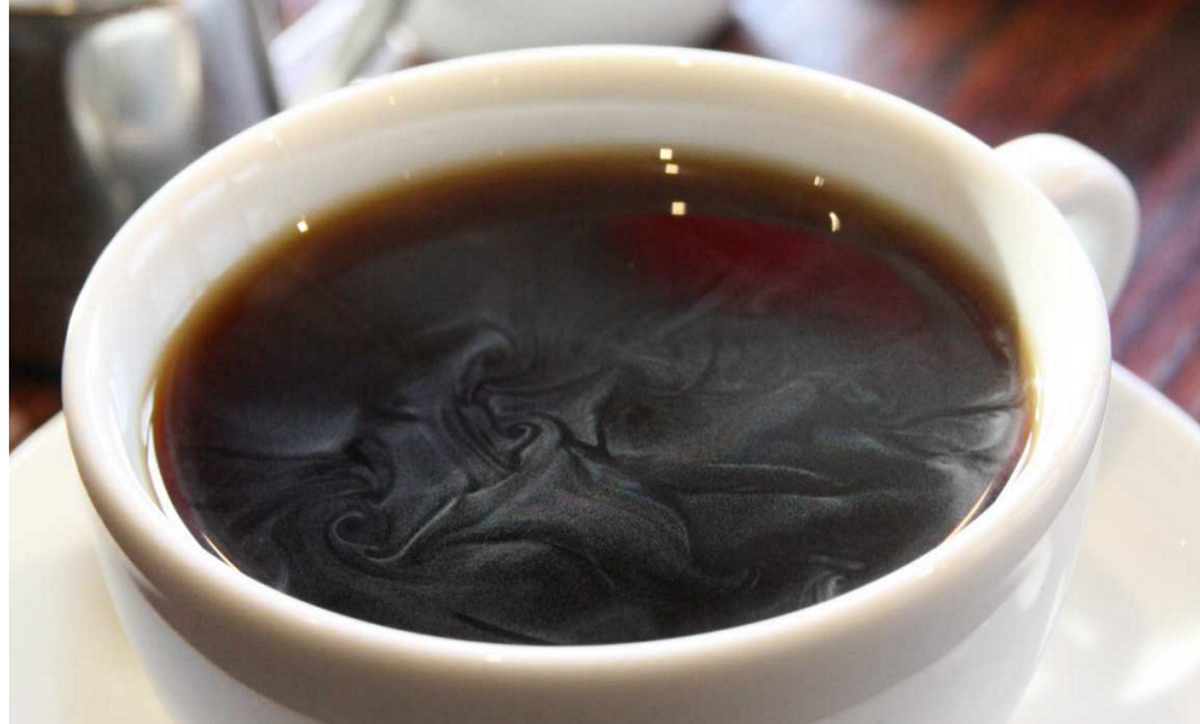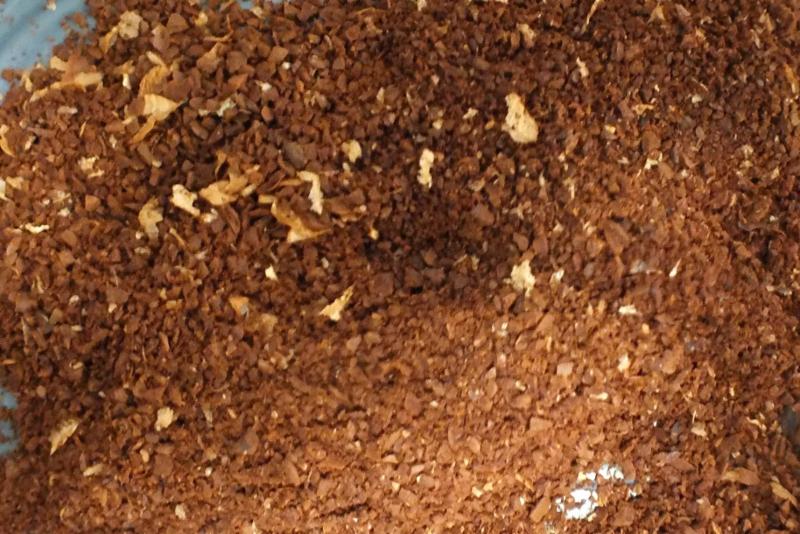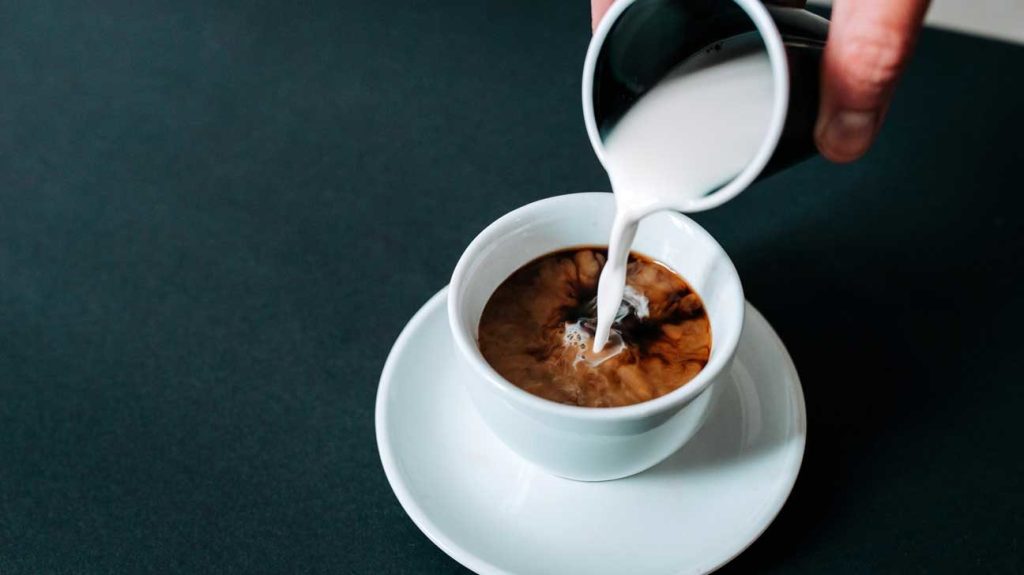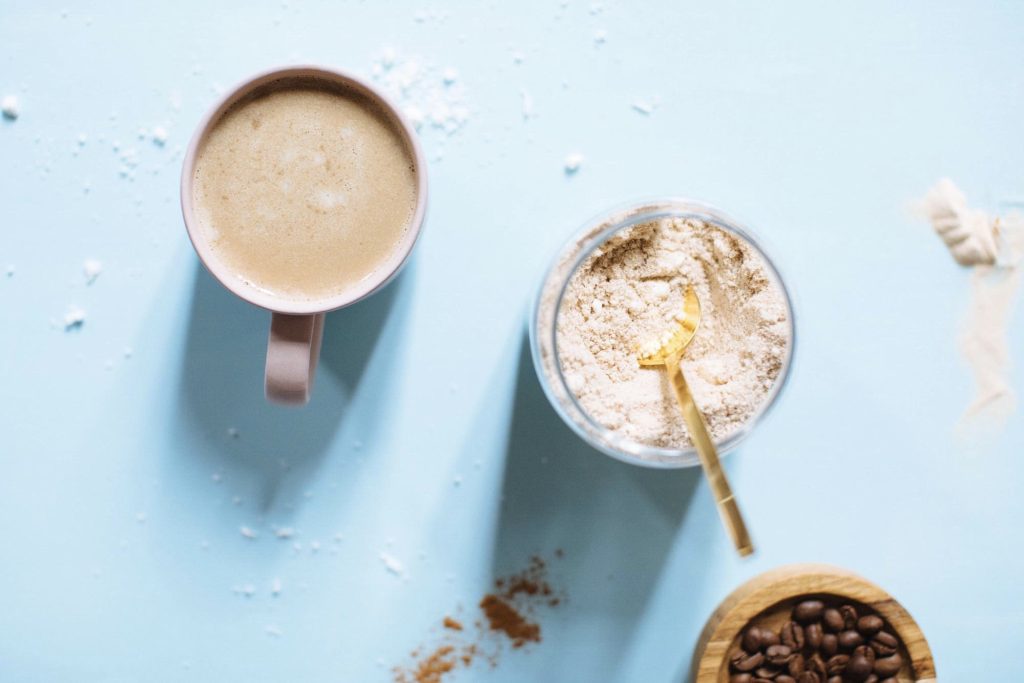What's the Deal with the White Stuff in My Coffee?

I’ve occasionally noticed little white specks floating in my coffee while brewing it. While I can simply remove it with a spoon, it made me question how and why there is the white stuff in my coffee.
So I did some digging to find out. Here’s what I found out:
There could be several reasons for the white substance in your coffee. It could be chaff, the coffee bean’s dried husk, which looks like a harmless white spot on the surface of the coffee. If the coffee creamer is separating or has gone bad, the white substance may appear in the coffee.
But there’s much more to learn.
Continue reading to find out more!
What is chaff from coffee beans?

The dried skin of the coffee bean is known as chaff. It’s also known as the husk, and it’s normally removed during the roasting process.
If a small amount of chaff (also known as silver skin) remains on the bean, it may end up in your coffee grounds. This is a very natural occurrence that can occur in all of your coffee grounds. The majority of it burns off during the roasting process, but some of it can get stuck inside the coffee bean’s fold. This means that you won’t see it until the coffee beans are ground.
Chaff has no flavor except that of the oil it absorbs from the coffee bean, therefore it won’t interfere with the flavor of your coffee.
Because chaff is a nuisance, businesses are continuously looking for new ways to deal with it. Throwing it out contributes to pollution. However, chaff does not have to be thrown away. It’s useful as a fertilizer, mulch, and even bedding for pets and hens.
Organic coffee is a good option if you want to buy coffee from a company that reuses or recycles the chaff. While organic does not always imply health, Fair Trade coffee producers are known for paying fair salaries and using ecologically friendly growing and roasting methods.
Is it coffee chaff, and why are there white chunks in my coffee?
Coffee chaff is filtered away with the rest of the coffee, so it won’t show up in your brewed coffee. Because the chaff is removed during the roasting process, commercially ground coffee rarely contains it.
If you see white pieces on top of freshly ground coffee, it’s most likely chaff. After all, those white specks floating around in your coffee after you’ve brewed it and added creamer or milk might be anything.
I’ll begin with the easiest.
Creamer that has been powdered. If you’re using powdered creamer, the white specks could simply be creamer particles that weren’t thoroughly blended in. You can add more if you want, or you can drink it straight. It could harm you in either case.
If you use milk or another liquid creamer, it’s possible that it’s about to spoil. It can split somewhat, causing those minute bits to break loose, even though it hasn’t passed its expiration date and doesn’t smell terrible.
It could also be a mix of the warmth of the coffee and the use of a high-fat cream. The butterfat in the cream may not get heated enough to dissolve entirely if the coffee isn’t hot enough.
Bulletproof coffee is another type of coffee that can leave white fragments floating around. It makes no difference whether you use grass-fed butter or not.
Why is it that my coffee’s half-and-half separates?

The majority of half-and-half is just incredibly fat milk.
Half-and-half will separate if your coffee is too hot, just like milk or cream will. Half-and-half can separate because of the acidity of the coffee paired with the heat. If you don’t want your half-and-half to separate, temper it by pouring it into your cup first, then carefully pouring in your coffee.
To bring your half-and-half up to temperature, stir in a few drops of coffee. Add the remaining coffee once it’s warmed up. There should be no separation if you do it this way. You should also be able to avoid any separation if you replace the half-and-half with heavy cream.
Is it okay to drink coffee with curdled cream?
Yes.
You may find that cold milk or cream added to hot coffee curdles on occasion. Curdled milk is sometimes mistaken for spoilt milk. That is just partially correct. Coffee has a tiny acidity to it. It can contribute to the curdling of fresh, cold milk when it is scalded.
This curdling may not happen all of the time. It’s only that your coffee is probably not hot enough to curdle the milk. It’s also possible that your milk is just about to spoil. This occurs when your milk has some bacteria but not enough to cause the milk to curdle.
The scales can be tipped to cause your milk to curdle by adding that extra acid from your coffee, coupled with the heat. It might not have a bad flavor or smell. However, when it comes into contact with the coffee’s heat and acid, it contains just enough acid and bacteria to produce curdling.
It’s totally okay to drink milk as long as you don’t abuse it by drinking it straight from the carton or putting it out on the counter. If the texture or appearance of curdled milk in your coffee bothers you, let it cool somewhat before adding your creamer.
Making your coffee with distilled water is something you don’t want to do. The minerals that give water its flavor are stripped away when you use distilled water. A lack of flavor in the water might lead to a lack of flavor in the coffee.
Does powdered coffee creamer have a tendency to clump?

Your powdered creamer will not clump up if your coffee is hot enough. It will, however, if your coffee isn’t heated enough. However, if your coffee creamer is clumping in its container, there could be several explanations for this.
First and foremost, do not use damp utensils in your creamer. Obviously, this will cause your cream to clump up and grow hazardous bacteria in addition to clumping. Also, make sure your creamer is stored in a cold, dry location and that the lid is properly secured. If the lid isn’t tight enough, moisture may get into the container and cause it to clump.
There are a few things you can do to unclog your powdered creamer if it becomes clumpy. To break up the clumps, use a potato masher or a fork. Then carefully wrap it and store it in the refrigerator.
You can put it in a food processor to make it powder again if it’s too clumpy. If you don’t want to do that, you can dilute your powdered creamer with water and mix it vigorously to break up the lumps. After that, just use it like regular creamer. If the lumps don’t bother you or aren’t too large, simply drop one into your boiling coffee and vigorously mix.
Have I answered all of your questions concerning the white substance in your coffee?
The presence of white stuff in your coffee does not necessarily indicate that something is wrong with it. It could be chaff, which is a completely natural and safe substance. It’s possible to find it in freshly ground coffee beans, but it’s unlikely to be found in commercially ground coffee. You’re also unlikely to find it in your freshly prepared coffee.
It’s entirely fine to sip your coffee if the cream has curdled. It’s possible that powdered creamer will clump up on you. You can use a fork, food processor, or water to de-clump your supercharged creamer and use it as a liquid creamer.











